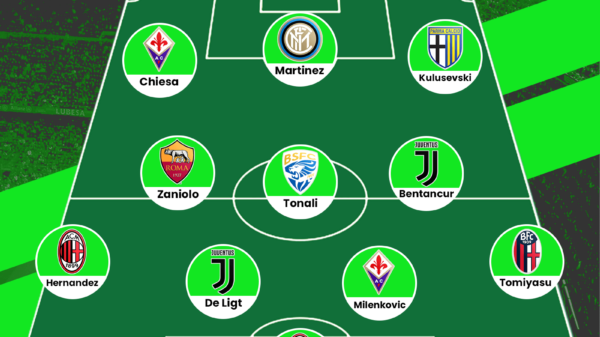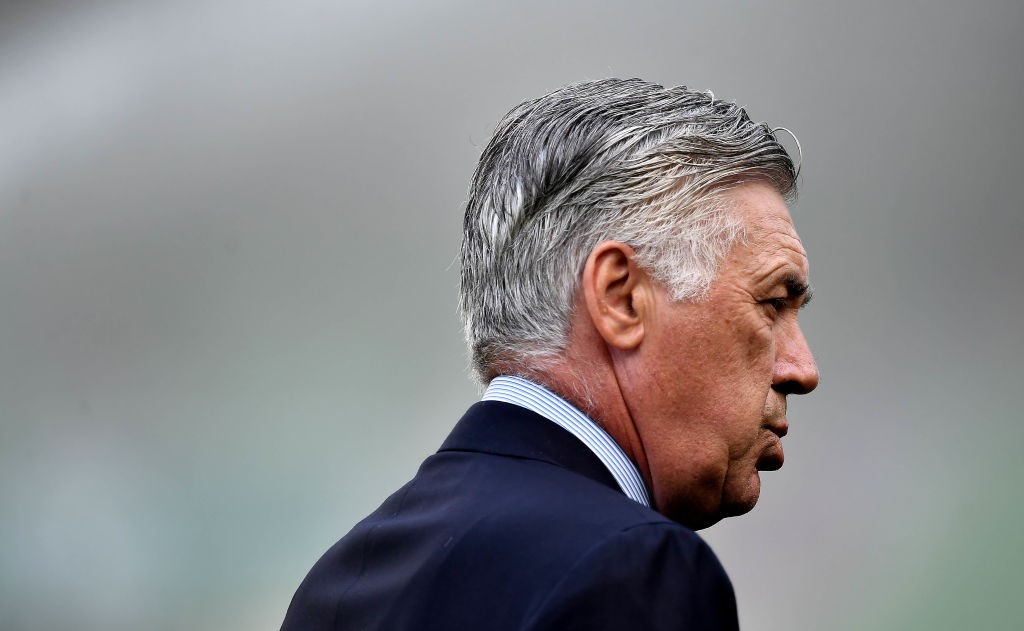Some tactical approaches remain associated with certain coaches even into the modern day; Helenio Herrera’s Catenaccio is one such set-up that has had a lasting effect on the beautiful game. Greg Lea details the system with special focus on the 1965 Champions League final.
Catenaccio has become a dirty word. It is often used today to refer to a negative mind-set or ‘parking the bus’, and Italians tend to shudder when they hear it mentioned, looking back with regret at a style of play that the country became famous for. To talk of Catenaccio solely in these terms, though, ignores the fact that it was one of the greatest tactical innovations in the history of the game.
In the early 1930s, the Austrian coach Karl Rappan pioneered a system which became known as verrou, or ‘the bolt’. In charge of a semi-professional outfit in Switzerland, Rappan decided that a focus on tactics was required to challenge the physically fitter professional clubs that his Servette side would regularly encounter.

The main revolutionary element of the setup was the employment of a spare man in defence. The wing-halves – akin to modern-day outside central midfielders – in the 2-3-5 formation predominant in Switzerland at the time dropped back to play as central defenders, with one of the initial centre-backs moving behind the defensive line and some members of the front five also pulled deeper into midfield. Relieved of man-marking responsibilities and thus unable to be dragged out of position, the transposed centre-back – who would later become known as the libero, the Italian word for ‘free’ – added another layer of security at the back by sweeping up loose balls and tackling opposition forwards who had breached the initial defensive barrier.
Catenaccio, the successor to Rappan’s verrou, was used widely by smaller outfits in Italy in the 1950s, but will always be most synonymous with Helenio Herrera, manager of Internazionale between 1960 and 1968. Considering that there are few coaches so inextricably wedded to a particular tactical configuration – perhaps only Herbert Chapman and Rinus Michels come close – it is interesting that Herrera arrived at Catenaccio through pragmatism rather than dogmatism. Inter scored the second-highest amount of goals in the Argentine’s first two Serie A campaigns but could only finish third in 1961 and as runners-up in 1962; threatened with the loss of his job, Herrera adopted a safety-first approach, removing a midfielder from Inter’s starting eleven and repositioning him as a libero behind the defence.
Herrera attracted severe criticism for his side’s format. The use of a system seen as cynical, negative and even unsporting was considered forgiveable at smaller clubs looking to find a way to compete, but unacceptable at one of Inter’s standing. Cross-city rivals Milan were actually the first major outfit to adopt Catenaccio under the stewardship of Nereo Rocco in the early 1960s, but Inter were most extreme in its deployment, the Nerazzurri’s 1-0 victory over Benfica in the European Cup final of 1965 serving as the perfect case study of the tactic in practice.
The Portuguese and Italians had reached the final in very contrasting ways. Benfica, winners of the tournament in 1961 and 1962, made light work of their previous three two-legged ties, defeating La Chaux-de-Fonds (6-1), Real Madrid (6-3) and surprise package Győri ETO (5-0) by large aggregate margins. Inter, on the other hand, had had a more difficult passage: after easing past Dinamo Bucharest 7-0 in the first-round, Herrera’s men ground out victories over British opposition in the quarters and semis, beating Rangers 3-2 and Liverpool 4-3 over two legs.
The final – controversially held at the San Siro – was widely anticipated, pundits and supporters alike expecting a tight affair. Inter lined up in their asymmetrical 1-4-3-2, with Benfica set up in a 4-2-4. The numbers though, as with all formations, do not tell the whole story, and it became apparent almost from the first whistle that the two teams intended on taking very different approaches: whereas Benfica poured forward whenever they went on the offense, Inter commited as few men to their attacking efforts as possible. Defensive security was not to be risked, a method that frequently left inside-forward Sandro Mazzola and number nine Joaquin Peiro isolated at the top of the pitch.
One of Herrera’s motivational mottos was ‘think quickly, act quickly, play quickly’, and Inter’s verticality was evident even in the opening fifteen minutes. Benfica, whose all-Portuguese eleven contained the likes of Eusebio, Mario Coluna and Antonio Simoes, were content to keep hold of the ball and wait for the right opportunity; Inter, conversely, looked to play through the pitch as swiftly as possible, attempting to fulfil Herrera’s ideal of reaching the opposition’s box with no more than three passes. The Nerazzurri began the better of the two sides, although neither goalkeeper was really tested early on.
Jair da Costa, the 25 year-old Brazilian, perhaps best encapsulated Inter’s overall strategy. Nominally a right winger, Jair was utilised by Herrera as a ‘returner’, charged with sitting deep when Inter were out of possession and springing forward quickly on the counter when the ball was won back. His pace and running power were demonstrated with two surges down the wing in quick succession, and his ball-carrying proficiency was vital when Inter transitioned from defence to attack.
On the opposite flank, Giacinto Faccheti was an equally important attacking weapon. The left-back scored an impressive 59 goals in 476 appearances for Inter, and was a key piece of evidence against the charge that Catenaccio was a purely defensive scheme. Faccheti was able to bomb forward partly because of his individual attributes, but also because of the wider context of Italian football within which he was produced: most teams, including Inter themselves with Jair, fielded a ‘returner’ on the right and, since these players naturally sat deeper, the opposing left-back was invited forward to join the attack.
Aside from Jair and Faccheti’s vertical runs, the main source of Inter attacks were long balls launched forward by the central midfielder Luis Suarez or sweeper Armando Picchi. Both players were talented technicians, but while Benfica’s Eusebio and Coluna set the tempo for their side by playing short passes to team-mates, Suarez and Picchi invariably looked to pick out Mazzola and Peiro with lofted passes over the top. Suarez, who became the most expensive footballer in the world when he moved to Milan from Barcelona in 1961, possessed fantastic vision and a wonderful range of passing, and the fact that Picchi was free from man-marking responsibilities in the defensive phase also meant that he often found himself with time on the ball to launch counter-attacks from deep.
Mazzola’s role in the team was particularly tasking. A wonderfully creative player who combined a glorious touch with dangerous pace and agility, Mazzola was relied upon to bring Suarez and Picchi’s sweeping balls under control and immediately feed Peiro or take a shot on goal. Inter’s system relied upon maximum efficiency up front, and it was largely down to Mazzola to turn hopeful passes into clear-cut opportunities.
On 43 minutes, Inter made the breakthrough, Jair’s shot slipping through keeper Costa Pereira’s arms and rolling into the net. It was the perfect time to score, particularly for a side who relished being a goal ahead: Benfica would be forced to play higher up the pitch in the second half, which would in turn open up space in behind for Inter to counter into.
At the start of the second period, the Nerazzurri predictably slowed the pace of the game down by any means necessary. Taking advantage of the old back pass ruling, the half began with Inter’s backline simply returning the ball into the hands of Giuliano Sarti time and time again. Was this cynical play from a negative team practicing anti-football, or a clever strategy to try and draw Benfica up the pitch, enticing them to press high and creating the gaps Inter that relied upon for quick turnovers?
Even as they dominated possession more and more, Benfica struggled to find a way through, Picchi’s presence a seemingly impregnable obstacle. It was turning into a masterful display from the Italian international, who swept up almost every loose ball and double marked the dangerous Jose Torres whenever required.
Although it is commonplace in the modern game, the use of a defender who marked zonally and defined his position on the field in relation to space rather than an opponent was extremely rare in the mid-1960s, and Benfica appeared to have no answer to Inter’s form of defending. Indeed, the two best chances in the first ten minutes of the restart fell to the Italians, Jair somehow steering a shot wide from six yards and Mazzola striking a post after being picked out by Peiro.
Benfica were dealt a cruel blow in the 55th minute, when a hip injury forced Pereira to be replaced in goal by centre-back Germano. With the Portuguese down to ten men, Inter were handed a real opportunity to kill the game off, but instead they began to sit ever deeper as the minutes ticked by, content to hold what they had.
In his fascinating history of football tactics published in 1977, Dr. Friedebert Becker noted that Catenaccio did not just involve the transformation of a centre-back into a libero but also the ‘pulling back, in front of him, [of] four defenders and three midfield players, leaving only two forwards for the attack’. Already noticeable in the first half, this arrangement became even more obvious after the interval, Inter’s extreme reactivity limiting attacks to sporadic bursts forward on the counter.
To Herrera’s critics, this was proof of the negativity and cynicism inherent to Catenaccio. They certainly had a point, and the remainder of the game was a pretty joyless affair, but it is also hard not to sympathise with the Argentine’s fierce competitiveness and will to win. What can be said, though, is that this style of football clearly reflected a certain paranoia and insecurity within Herrera. With a team containing the likes of Suarez, Mazzola, Picchi, Faccheti, Jair and Mario Scorso, Inter certainly did not lack talent, but their collective plan of trying to choke the game out hinted at a severe lack of belief and self-confidence.
Benfica – and the excellent Coluna in particular – saw a lot of the ball in the final twenty minutes, but were unable to create many obvious goal-scoring chances; as Jonathan Wilson writes in Inverting the Pyramid, ‘their attacking approach had become outmoded by Catenaccio, [which] had superseded the remnants of the classic Danubian style’. Inter held out relatively comfortably, able and willing to keep their talented opponents at arm’s length.
The stadium exploded when the final whistle was blown, all talk of tactics and strategies far from the minds of thousands of delirious Inter fans celebrating their side’s second consecutive European Cup. Indeed, the effectiveness of Herrera’s Catenaccio is one thing that cannot be denied, and defeating Liverpool, Rangers and Benfica to lift the trophy was testament to Inter’s character, resilience and ability to masterfully enact a prearranged game plan.
Throughout the history of football, the preeminent tactical arrangement of a particular period has tended to be followed by its antithesis. It was thus no coincidence that Catenaccio’s limitations were emphatically exposed by Ajax’s Total Football in the 1970s, a style of play that promoted flexibility over rigidity, proactivity over reactivity and attack over defence.
Celtic had, to some extent, halted the ascendancy of Catenaccio with their victory over Inter in the 1967 European Cup final, but that was more a triumph of a set of fantastic individuals pitted against an ageing team past their best. Ajax’s defeats of Inter and Juventus in the 1972 and 1973 European Cup finals were unequivocally systemic, the Italians unable to cope with the lack of reference points and free movement of Rinus Michels’ men. Catenaccio had been rendered redundant.
History has not been kind to the system, which is now recalled in almost entirely negative terms. Herrera was reviled by many fans and fellow managers alike, but there is an element of truth in his protestation that Catenaccio is only remembered in this way because other clubs did not include the attacking principles – Jair and Faccheti’s progressive roles, the creative talent of Mazzola, Suarez and Corso – when they imitated Inter’s configuration. If tactics, moreover, are all about maximising your side’s likelihood of success, it is hard to argue that Herrera, with three Scudetti and two European Cups, did not achieve this, and the use of a libero – although not strictly Herrera’s invention – was a genuinely innovative and revolutionary development.
Nevertheless, as demonstrated in the 1965 European Cup final, Inter’s approach was reactive, negative and safety-first, and could perhaps be respected but rarely loved. No system has ever provoked as much philosophical debate as Catenaccio, the most notorious tactical setup in the history of the game.
Written by Greg Lea
- From the Catenaccio to the 3-5-2: Italy’s love affair with tactics and strategy - March 25, 2015
- Euro 2012: Croatia 0-1 Spain | Epitome ofthe Control of the Game - February 11, 2015
- Catenaccio: Inter’s Tactical Set-Up Under Helenio Herrera - October 20, 2014


























































